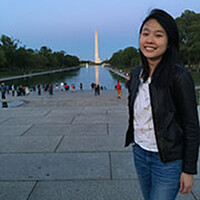Edmonia Lewis chiseled a path for minorities into the art world
In Edmonia Lewis’s eyes, clay or marble was never mere stone or dirt. In these materials, she saw the potential to revive abolitionists and to celebrate her dual ancestry. Despite obstacles and setbacks that befell her time and again throughout her lifetime, she carved her way into the art world – and into history.
To kick off the 41st US Black History Month, Google on Wednesday paid tribute to Ms. Lewis – the first professional sculptor of African-American and Native American heritage – with a Doodle depicting her working on one of her most famous works, "The Death of Cleopatra."
Lewis, who was originally named “Wildfire,” was no stranger to hardship. Born to an African-American father and a Chippewa mother in the 1840s, she became an orphan at the age of five. Her brother financed her studies at Oberlin College in Ohio, but after being accused – and later acquitted – of stealing paintbrushes and attempted murder, she was not allowed to graduate.
Despite her minimal training, exposure, and experience, Lewis remained determined to pursue a sculpting career. In 1863, she moved to Boston, where she met portrait sculptor Edward Brackett, who took her as an apprentice. During her time with Brackett, she learned to produce medallion portraits of well-known abolitionists, including William Lloyd Garrison and Charles Sumner, according to the Smithsonian American Art Museum.
From there, her career finally took off, as she launched her first solo exhibition in 1864 paying homage to the Civil War heroexs and abolitionists of her day. Her portrait busts of John Brown and Colonel Robert Gould Shaw – the white leader of the all-African-American 54th Regiment of the Civil War – were especially successful.
As she moved to Rome in the 1860s, where fine white marble and many neoclassical sculptors were abound, Lewis continued to reshape convention as she produced original works that incorporated her background and identity.
According to the Smithsonian, Lewis's “ethnic and humanitarian subject matter greatly distinguished her from other neoclassical sculptors.”
Often reflecting naturalism and cultural themes rooted from her dual ancestry, Lewis’ pieces received international acclaim until her death in 1911. Her realistic portrayal of the death of Cleopatra was called “the most remarkable piece of sculpture in the American section.”
Though most of Lewis’s works have not survived, those that have have served as inspiration for generations of minority artists.
“Decades later, Lewis’s legacy continues to thrive through her art and the path she helped forge for women and artists of color,” Google Doodle said in a statement on Wednesday. “Today, we celebrate her and what she stands for – self-expression through art, even in the face of adversity.”






